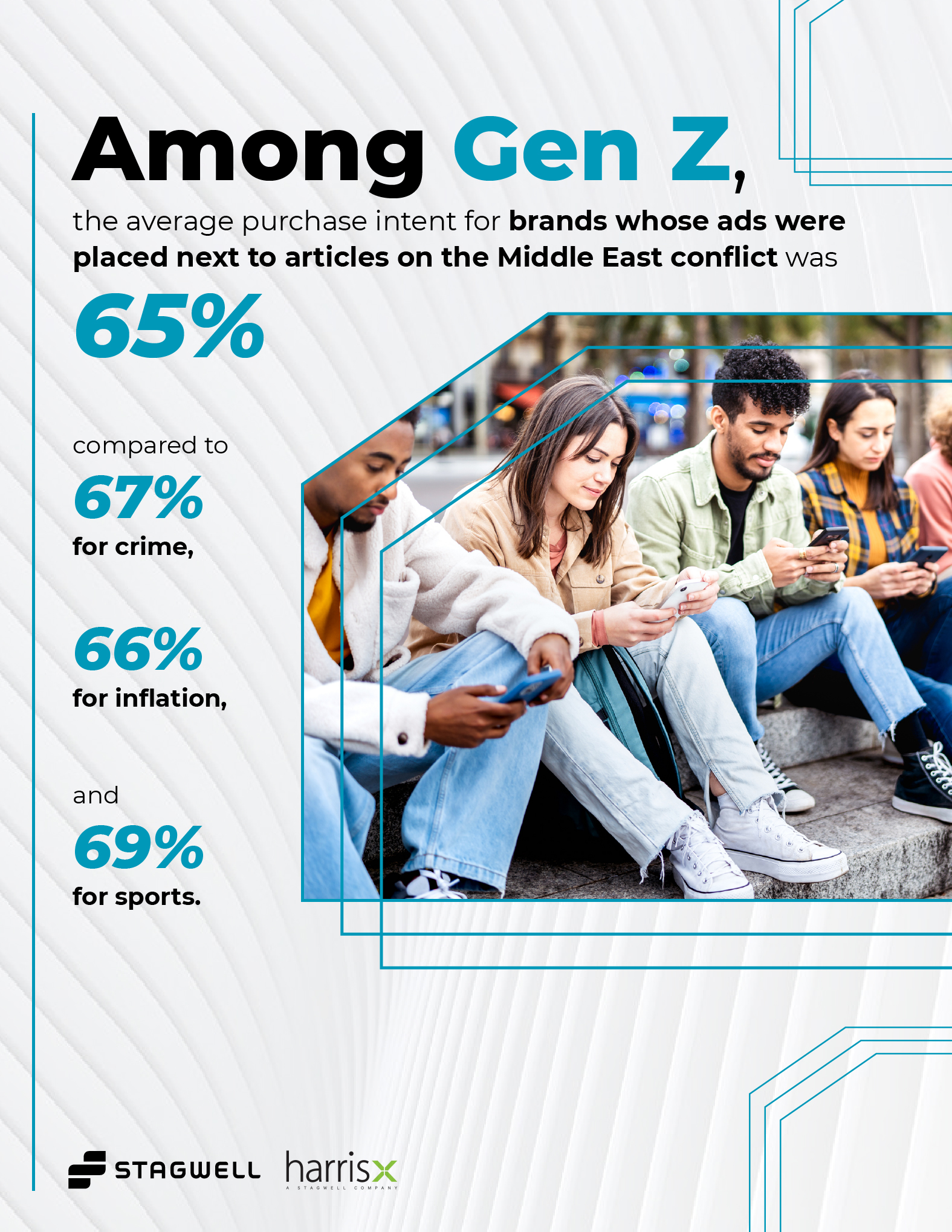Stagwell (STGW) Releases News Advertising Study Revealing It is Safe for Brands to Advertise Adjacent to Quality News Content Despite Overblown Fears
Stagwell (STGW) has unveiled a comprehensive study revealing that ads placed next to news stories on politics, inflation, and crime perform as effectively as those placed next to traditionally 'safe' topics like business, entertainment, and sports. This survey, which included 50,000 U.S. adults, debunks common myths surrounding 'brand safety' for advertisers, particularly among key demographics like Gen Z, affluent households, and moms. The results suggest that advertisers can benefit from engaging with news content, which could help support quality journalism financially. The findings will be further discussed at Stagwell's 'Future of News' summit in New York.
- The study shows ads next to 'risky' news topics perform as well as 'safe' topics, potentially increasing ad placements in news.
- Survey data highlight minimal differences in purchase intent across varied news topics (65-69% for Gen Z, 70-72% for affluent households).
- Stagwell's findings could lead advertisers to support quality journalism, aiding financial stability in news media.
- The survey incorporates a large sample size of 50,000 U.S. adults, providing robust data.
- Initiation of 'Future of News' studies and events could foster important discussions on advertising in news.
- The study's findings contradict widely-held 'brand safety' practices, potentially causing hesitation among conservative advertisers.
- A minimal difference of two to four percentage points in purchase intent might not be compelling enough for all advertisers.
- There is a risk that advertisers might still avoid controversial topics despite the study's results.
- The financial impact on Stagwell remains uncertain despite potential positive outcomes.
Groundbreaking 50,000-respondent survey shows ads placed adjacent to stories covering politics, inflation and crime perform as effectively as ads placed next to business, entertainment and sports stories.
Results debunk common 'brand safety' myths among key demographic groups for advertisers including Gen Z, affluent American households, moms and more.
Experience the full interactive Multichannel News Release here: https://www.multivu.com/players/English/9266651-stagwell-global-future-of-news-study-advertising/
Recognizing that news is the foundation of a thriving democracy and a critical marketing vehicle, Stagwell is launching a series of 'Future of News' studies and events to fuel discussions on the importance of advertising in news.
Stagwell's inaugural research for the series examines the concept of brand safety—the measures taken to ensure a brand's advertisements don't appear alongside content that could potentially harm that brand's reputation. Because the current approach to brand safety disproportionately hurts the news industry, Stagwell created a study to determine the real impact of ad adjacency.
The groundbreaking survey reveals that ads placed adjacent to news topics such as politics, inflation and crime perform as effectively as those placed next to business, entertainment and sports stories.
"Our research shows brands shouldn't fear advertising on news—but rather relish it. News junkies, who make up
Additional findings include:
- Among Gen Z, the average purchase intent for brands whose ads were placed next to high-quality news articles on the
Middle East conflict was65% , compared to66% for inflation and67% for crime—differences that are statistically insignificant. Purchase intent was69% for sports (widely considered a 'safe' news topic) illustrating a minimal four percentage point difference between the 'riskiest' and 'safest' topics. - Among more affluent American households, the average favorability ratings for brands whose ads were placed next to high-quality, yet political news articles on former President Trump and President Biden were each
72% —just two percentage points less than brands whose ads were placed next to a non-political entertainment story. - Among moms, the average purchase intent for brands whose ads were placed next to articles on inflation (a potentially negative story), and business (a more neutral story) were each
70% , showing no difference between the two. Purchase intent was only two percentage points less for brands whose ads were placed next to a news story about crime with the words "subway shooting" in the title—words that get blocked as a matter of course with today's brand safety practices.
"Brand safety considerations have become prevalent in the media and marketing industries, but they require serious scientific evaluation and more rigorous metrics to assess whether brands really face dangers from news adjacency," said Dritan Nesho, CEO of HarrisX, which conducted the study. "Our study shows clearly and repeatedly that ads next to news content that is currently considered 'not brand safe' performs on par with ads next to what is currently considered 'brand safe.'"
Stagwell is committed to initiating data-driven discussions with advertisers about their investment in news. This topic and more will be discussed at tonight's inaugural Future of News summit which will be held at Stagwell's global headquarters in
Interested parties can request a copy of the research here. For additional questions, please contact hello@stagwellglobal.com.
Methodology
The Future of News Study was conducted among 49,990
The survey data was weighted to a nationally representative sample of American adults across key demographics, including age, gender, region, race/ethnicity, education, income. Click here to read the full methodology.
About Stagwell
Stagwell (NASDAQ: STGW) is the challenger network built to transform marketing. We deliver scaled creative performance for the world's most ambitious brands, connecting culture-moving creativity with leading-edge technology to harmonize the art and science of marketing. Led by entrepreneurs, our 13,000+ specialists in 34+ countries are unified under a single purpose: to drive effectiveness and improve business results for their clients. Join us at www.stagwellglobal.com.
About HarrisX
HarrisX is a leading global research consultancy that regularly conducts major market research, public policy polling and social science studies and consulting engagements in more than 40 countries around the world. It is a proud member of Stagwell Global (STGW). Learn more at www.harrisx.com.
Contact:
Kara Gelber
pr@stagwellglobal.com


SOURCE Stagwell Inc.







